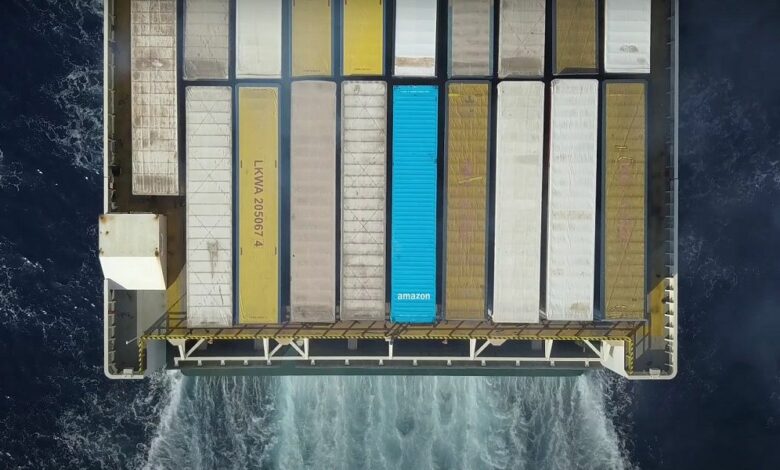Amazon takes to the sea for more sustainable deliveries in Europe

Amazon is increasing the use of short sea trips to move inventory and customer packages across Europe as part of its effort to provide a more efficient, faster, and lower-emission mode of freight transport.
The e-commerce giant operates multiple sea routes to transfer goods between Italy and Spain in collaboration with Italy’s roro operator Grimaldi and most recently linked its warehouses in Germany and Poland to the Swedish ports of Helsingborg, Nynasham, and Trelleborg via Stena Line.
“We are always looking for innovative ways to transport packages for customers through less carbon intensive methods,” said Gulfem Toygar, country manager for Amazon Sweden. Once the truck arrives at a Swedish port, it goes to one of Amazon’s partner hubs in Sweden, like bike-delivery service Airmee, before final delivery to the customer.
Almost half of Amazon’s warehouse transfers between Italy and Spain are now transported by sea, and by using sea transportation rather than traditional trucks, the company said it is avoiding roughly a quarter of the carbon emissions for next-day delivery trips on average in Sweden
“Amazon will transfer thousands of truckloads between its buildings by sea in Europe, saving thousands of tons of CO₂ emissions,” said Helder Velho, EU vice president of surface transportation, adding: “Sea routes provide a more efficient, less carbon intensive, and, in some cases faster mode of freight transport in comparison to other alternatives.”
Amazon has been using sea routes to move inventory between its European buildings since 2019, starting with two routes to serve customers in Sardinia and Sicily. This year alone the company added over 60 short sea and waterways routes and today operates more than 170 sea routes across Europe as part of its goal of decarbonising its operations and achieving net zero carbon emissions by 2040.
